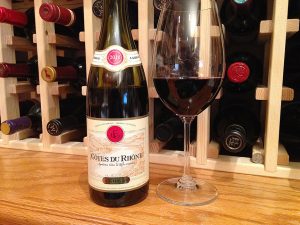Columbia Winery Composition Red Blend NV: Unlike earlier versions of Composition, where cab led, in this effort syrah dominates (70%), followed by malbec (13%), petit verdot (5%), merlot (3%), mourvedre (3%), and other red varieties (6%). Deep red color; reluctant nose; raspberry, plum, plenty of oak and sweet fruitiness on the palate with some redcurrant tang on the finish; soft tannin and medium acidity, medium-heavy mouth, smooth. Columbia Winery—like Composition Red Blend—has been searching to find itself this century. Founded in 1962 by University of Washington professors, it was the first Washington winery to focus on European wine grapes and first to introduce syrah to the state, so this effort reflects that heritage. The 21st century has not been kind to Columbia, with the winery changing ownership three times since 2001. Now it is a Gallo brand, which should bring stability. Production has been sharply reduced, which should augur for finer efforts. Composition seems aimed at the Apothic/Menage à Trois market, but with less flamboyant fruitiness and oak. A competent effort, as you expect from Gallo. $14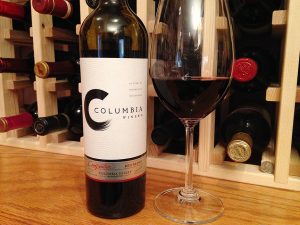
Month: July 2015
Concannon Vineyard Cabernet Sauvignon Paso Robles
Concannon Vineyard Cabernet Sauvignon Paso Robles AVA 2013: Bright ruby color; rich, earthy, blackcurrant nose; fruit-forward red cherry, black currant tang, plenty of plum and oak, vanilla, spice; meaty, round, smooth, sweet; mild tannin, some acidity. 85% cab, 10% merlot, 5% petite sirah. Concannon’s legacy reaches back to 1883 when James Concannon became first Irish immigrant to successful found a California winery. In 1950, Concannon hired the first female professional winemaker, Katherine Vajda. In 1961, winery introduced petite sirah to the world. Finally, in 1970s, Concannon Clones 7, 8 & 11 became backbone of cab plantings in California’s premier wine regions. Made in fruity-sweet, mild tannin style some red lovers love and others not so much (they want more tannin, acidity, and complexity). Well worth a try to see if it pleasures your palate. $20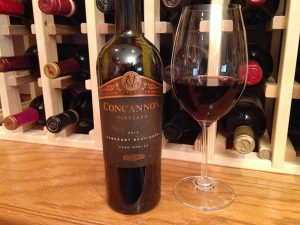
Michael David Freakshow Cabernet Sauvignon 2012
Michael David Freakshow Cabernet Sauvignon 2012. Dark brooding color, big oak, big black fruit, black cherry, blackberry, boysenberry, pomegranate, smoky oak (we did mention oak a second time), vanilla, blackcurrant tang on the finish; robust but smooth with reserved tannin. Michael David wines always seem to put on a good show, and Freakshow may be their showiest—loaded with juicy Lodi fruit and rich flavor plus an over-the-top label (Robert Parker: “one of the best labels in the wine business”) that matches the wine inside. The wine is almost sweet with the oak, but somehow MD gets to the edge of OMG and pulls it off by using French oak (not the stronger American oak). This is the average person’s monster jammy Napa cab, but at a fraction of the price, and from lowly Lodi in the Central Valley. Michael and David Phillips are brothers whose family has farmed in Lodi since the 1850s and has made wine for almost a century. That’s likely reason for aggressively progressive sustainable farming practices; by sixth generation you understand the long haul. All fruit MD has crushed since 2011 was certified sustainable. Freaky good. $19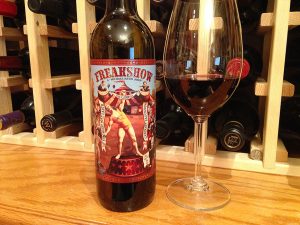
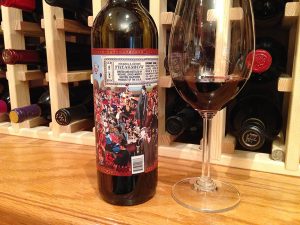
Laurent-Perrier Cuvée Rosé Champagne Brut NV
Laurent-Perrier Cuvée Rosé Champagne Brut NV: One of the most famous rosé Champagnes in the world; intense, lovely color that evolves from raspberry into salmon-pink in the glass; strawberry, red fruits on the nose; bright, round on the palate with strawberry, black cherry flavors; tingle of black currant on lingering finish; nice acidity, some minerality, focused, fresh. Comes in iconic, instantly recognizable dumpy bottle. This is 100% pinot noir, mainly from Montagne de Reims (the very heart of the Champagne region), and includes grapes from grand crus of Ambonnay, Bouzy, Louvois, and Tours-sur-Marne. Delicious as aperitif, will pair well with fish, cheeses, and lighter meats, also with red fruit desserts. Clearly this is pour for celebrations year-round, but consider for elegant summer event where wow is an objective. Think, too, as a two-person joy where savoring something exquisite makes the moment special. $77-100
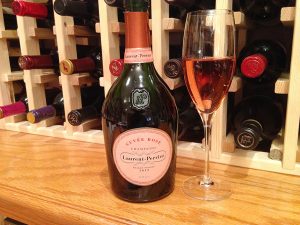
Nicolas Thienpont Chateau La Prade Francs-Côtes de Bordeaux 2010
Nicolas Thienpont Chateau La Prade Francs-Côtes de Bordeaux 2010: Deep ruby-crimson color; medium-plus body; opulently fleshy, ripe, bright fruits, plum, red cherry, strawberry, black currant tang. As expected from right-bank Bordeaux, merlot dominates—90% to 10% cab franc; combined the two grapes make an impressively robust red (on left side of the Gironde, merlot and cab franc lend some softness and finesse to cabernet sauvignon). Cotes de Francs is Bordeaux’s smallest AOC appellation and one of the highest in elevation; several critics opine this effort “this is about as good as Cotes de Francs can be.” This is a big wine, but not a raging red monster; tannins are there but do not deliver oppressive puckering; as it relaxes in your glass, some of playful smiles of the ingénue facet of merlot peek from behind the curtain, rewarding you for sticking around after the opening salvos of big, serious wine bluster. Nice value, nice wine. $15-22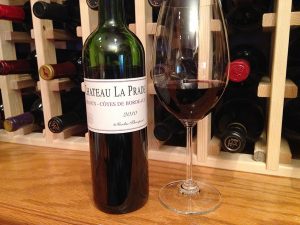
Pedernales Cellars Texas Viognier 2014
Pedernales Cellars Texas Viognier 2014: Peach, apricot, honeysuckle, orange blossom on vivid nose—classic viognier characteristics; white peach, white melon, honey, citrus on the palate; this is vivacious with more palate-cleansing acidity than typically found in viognier; typical higher alcohol (14%) thanks to viognier’s long ripening; no perceptible oak; pleasantly pleasing finish. Viognier has been ascendant since 1990s, both as an alternative to chard and as a blending grape, usually with syrah to solve syrah color problems and to add aromatics and complexity (most famously in Côte-Rôtie and Australia). The grape is a Texas darling because it thrives in hot weather; on the flip side, it buds early, making it susceptible to spring frost (that happened in 2013, trashing much of the Texas crop), and has other problems because of its thin skin. As with so many elements of Texas wine, we shall see how it all shakes out. The grapes for the Pedernales effort come from High Plains near Lubbock from growers who give Pedernales an exclusive on their fruit. There is a reserve bottling that typically is available only from the winery and soars to $40 price tag; this effort is well-priced for its quality and well-worth a pour if you can find it. Another Pedernales success. $14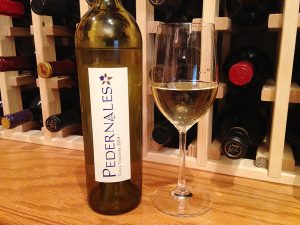
Steele Mendocino County Zinfandel Pacini Vineyard 2010
Steele Mendocino County Zinfandel Pacini Vineyard 2010: Blueberry, bacon nose; big, very ripe fruit on the palate, raspberry, black cherry, blackberry, chip of chocolate and caramel, pinch of pepper, too; immense fruit; cool climate gives this an acidity boost, which helps balance intense fruitiness and explains its somewhat subdued (for a zin) alcohol—13.8%. Mendocino County is north of Napa and Sonoma and generally regarded as the pleasant enough cousin of the grandees of California grape aristocrats on Route 29; Mendocino traditionally has been zin country, and this effort sustains the reputation. It is classically over-the-top, red-fruit-fruity flavor bomb. If you want to pour a quintessential California old vines, big fruit zinfandel, look no further than Steele’s Pacini Vineyard effort. Oh, my, the mouth-filling fruit; so much flavor to savor it panics the palate. $17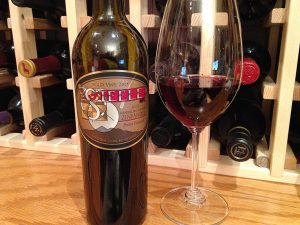
Petroni Vineyards Chardonnay Estate Grown 2013
Petroni Vineyards Chardonnay Estate Grown 2013: Light pale straw color; green apple, whiff of flowers on the nose; lemon, apple (green and golden), melon, pinch of pear on the palate. Medium body, wonderfully crisp and clean, cutting acidity (no malolactic fermentation) makes this palate-cleansing, food friendly; dry, tart, nutty, citrus on the finish, oak thankfully restrained (only 30% new French), well balanced. Interesting backstory: winery started by Lorenzo Petroni, who in 1970 opened the North Beach Restaurant, perhaps San Francisco’s leading Italian eatery featuring authentic Tuscan cuisine; in 1992 he purchased the hillside vineyard in Sonoma’s Moon Mountain district (Sonoma’s newest and highest district on the western slope of the Mayacamas Mountains); eschewing Tuscan roots, this effort is distinctly Burgundian with whole bunch pressing, full-barrel fermentation, restrained use of oak, no malo. Nice, understated effort vinted to pair with fare as befits a restauranteur/wine maker. $30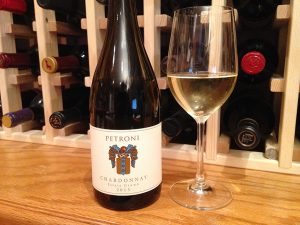
Badenhorst Family Wines The Curator Red 2011
Badenhorst Family Wines The Curator Red 2011: Big, bold juicy fruit twist-and-pour mellows with air time to become a less boisterous and more calmly enjoyable fruit-sweet sipper; pepper, juicy cherry, black cherry, sour cherry, plum, vanilla, riff of rhubarb on the finish. Smooth; convivial tannin; carefree acidity; resembles an Aussie shiraz—no surprise with a blend of 95% shiraz, 3% cinsault, 1% mourvedre, and 1% viognier. Wine comes from Swartland, South Africa, a short drive north of Cape Town; it is Cape Town’s breadbasket with stretching wheat fields and dark soil (Swartland is Dutch for “Black Land”). By the time you reach looming mountains, wheat fields turn to wine and olive, fruit and vegetable farms; the hot and dry climate favors grapes included here and creates comparison to Aussie efforts, although local makers may prefer comparison to southern Rhône blends. Either way, nice company; this is very approachable demonstration of South African value. $12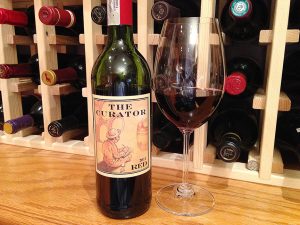
E. Guigal Côtes du Rhône Rouge (Red) 2010
E. Guigal Côtes du Rhône Rouge (Red) 2010: Made in Northern Rhône style with 49% syrah, 48% grenache, and 3% mourvedre and other grapes; dense ruby-purple color; intense flavors of smoky dark cherry, raspberry, olive, plum, pinch of pepper; supple but noticeable tannin, a bit of fruity sweetness and black currant bite on mid-palate and finish. E. Guigal sets the standards in the Côte-Rôtie and Côtes du Rhône; the Côte du Rhône is the entry-level effort, but it still is made with the best grapes in class, aged in stainless steel and foudres (large wooden casks) for 18 months to provide a different palate experience than French and America oak barrels, then held for two years of bottle aging. That’s how you earn the praise of Robert Parker, Josh Raynolds, Steven Tanzer, Wine Spectator and others year after year. This distinctive wine has both rustic, woodsy elements and sophisticated balance. For serious red wine drinkers, a seriously good buy. $19